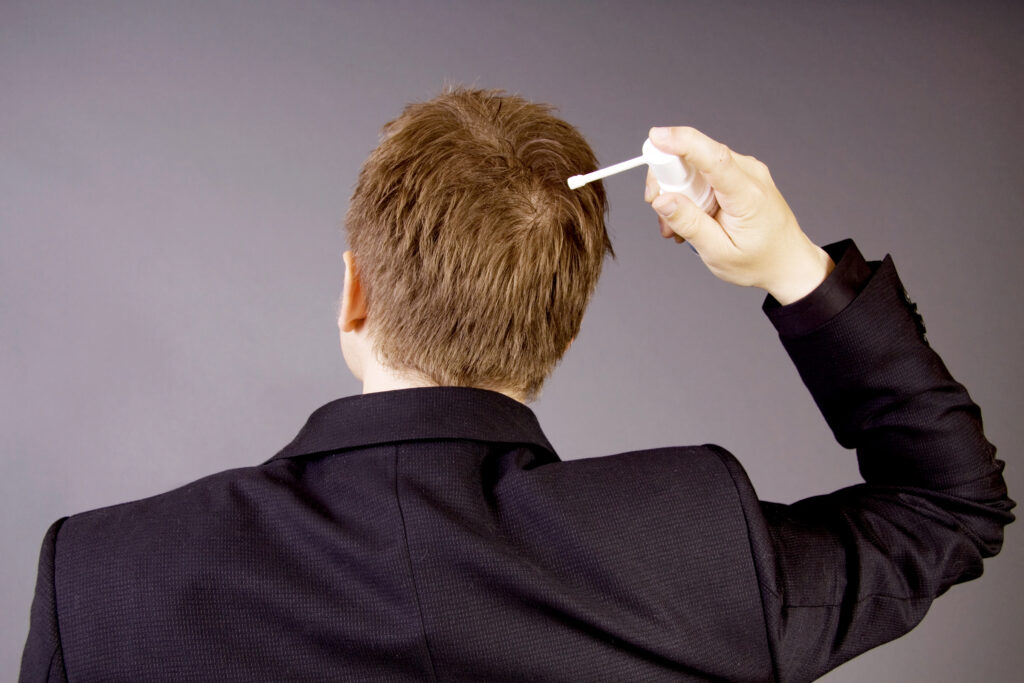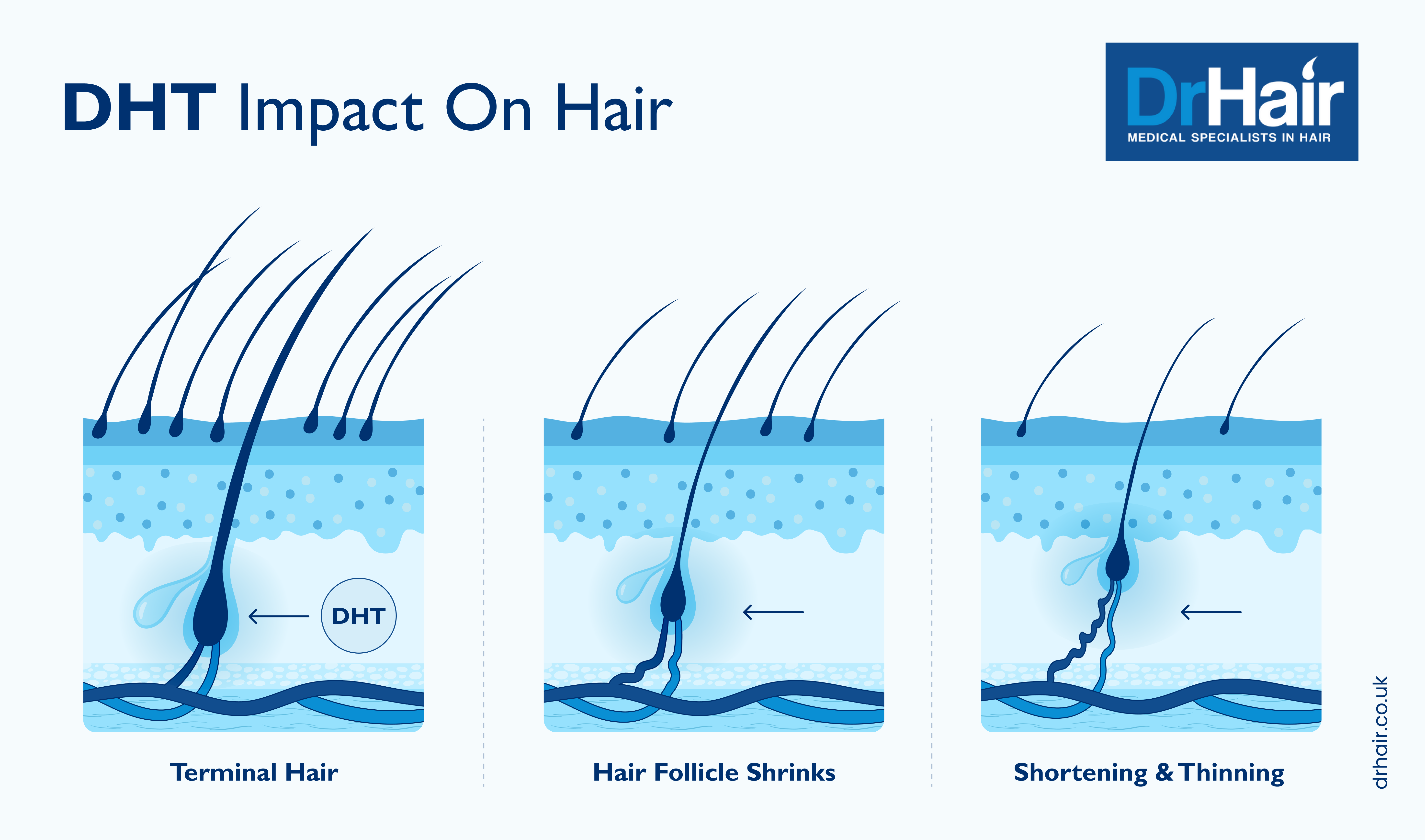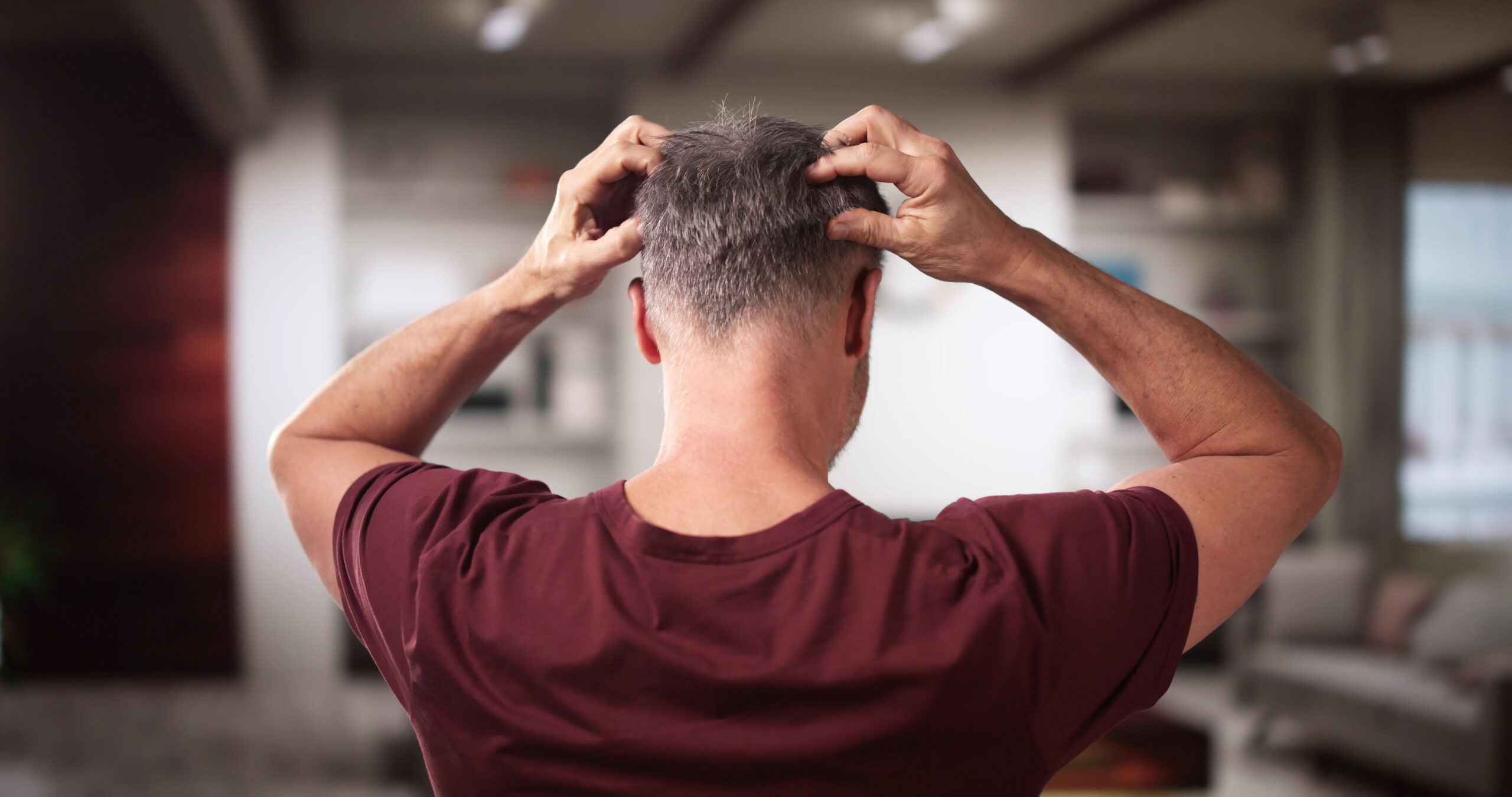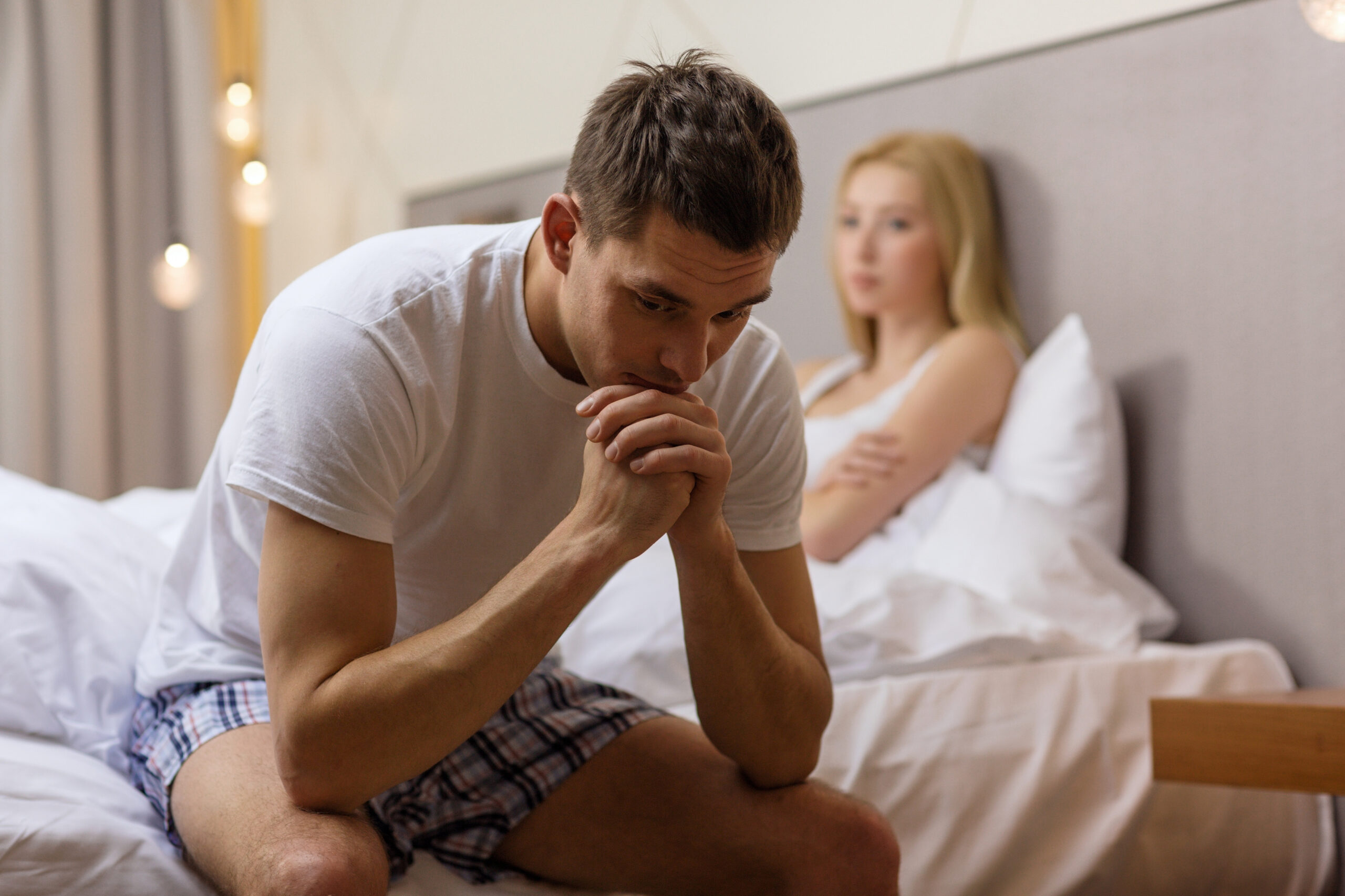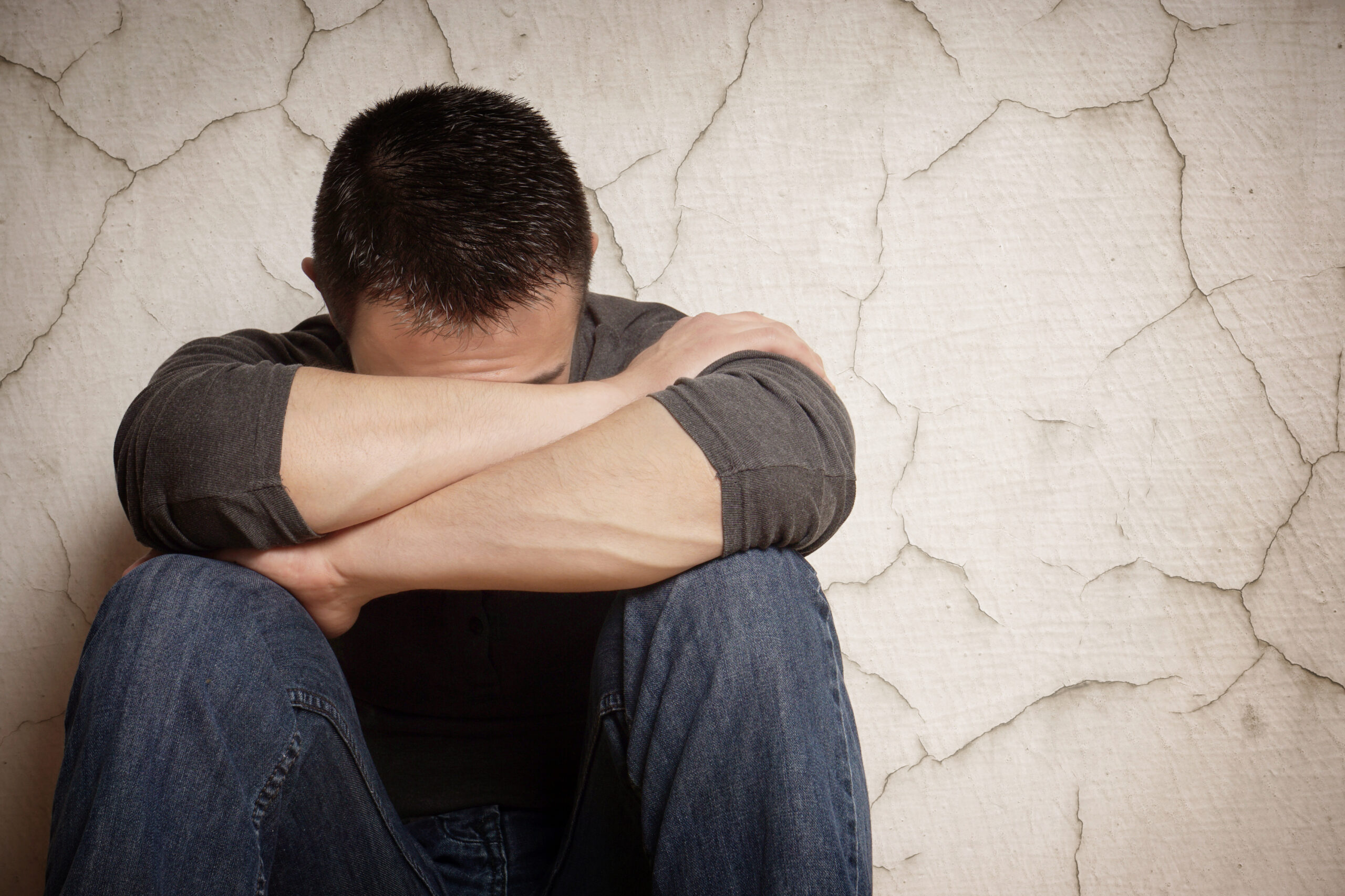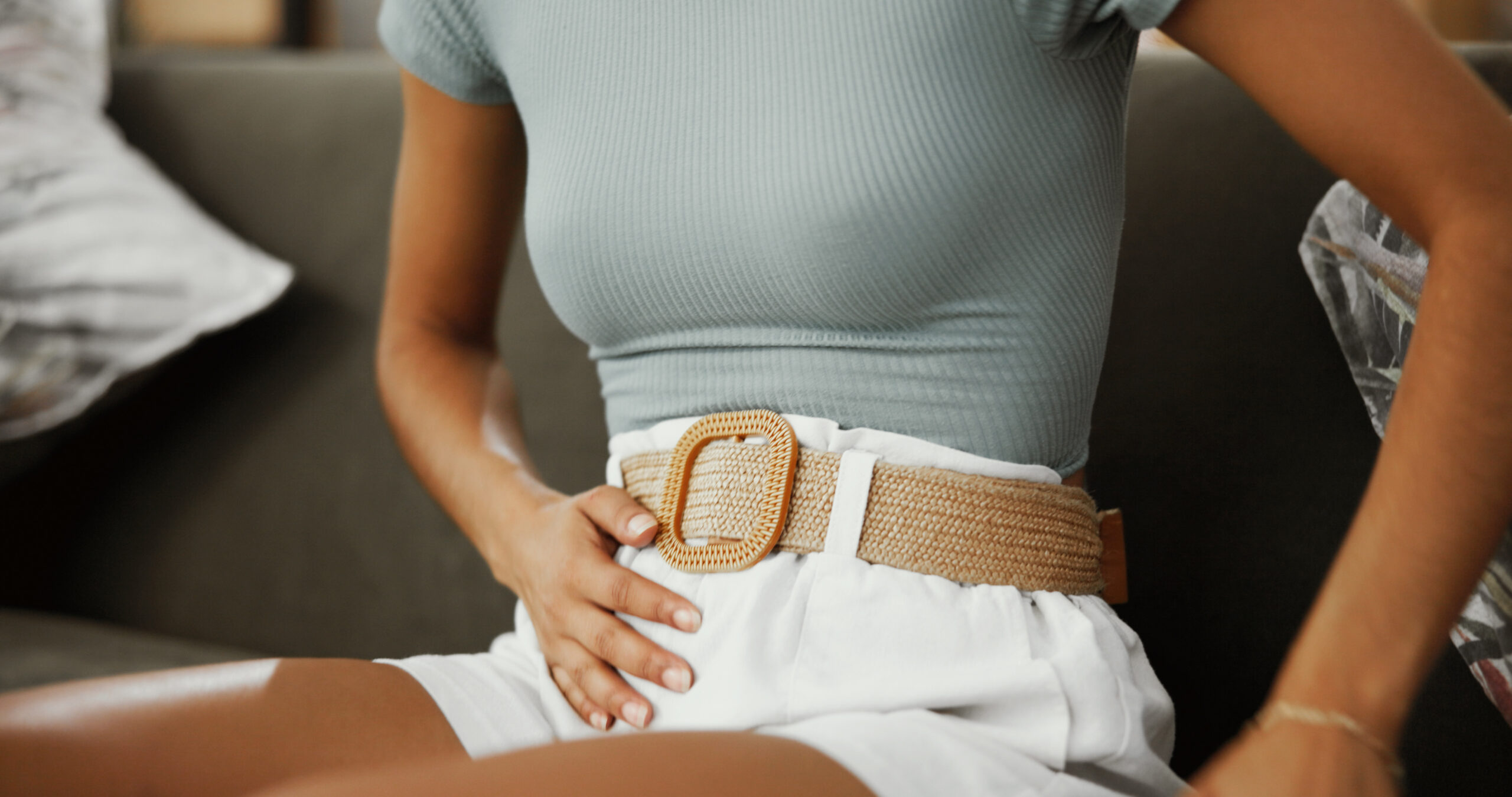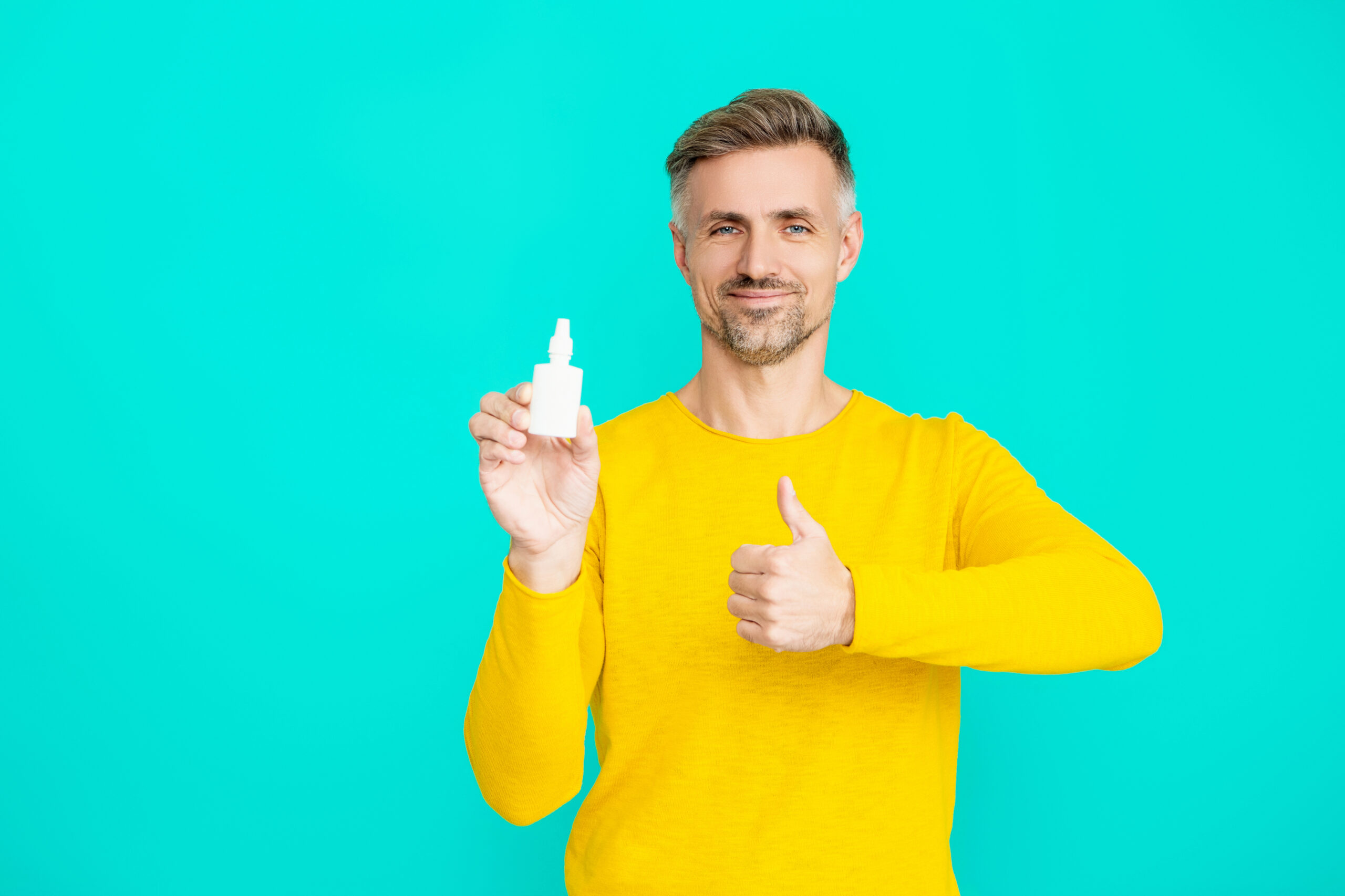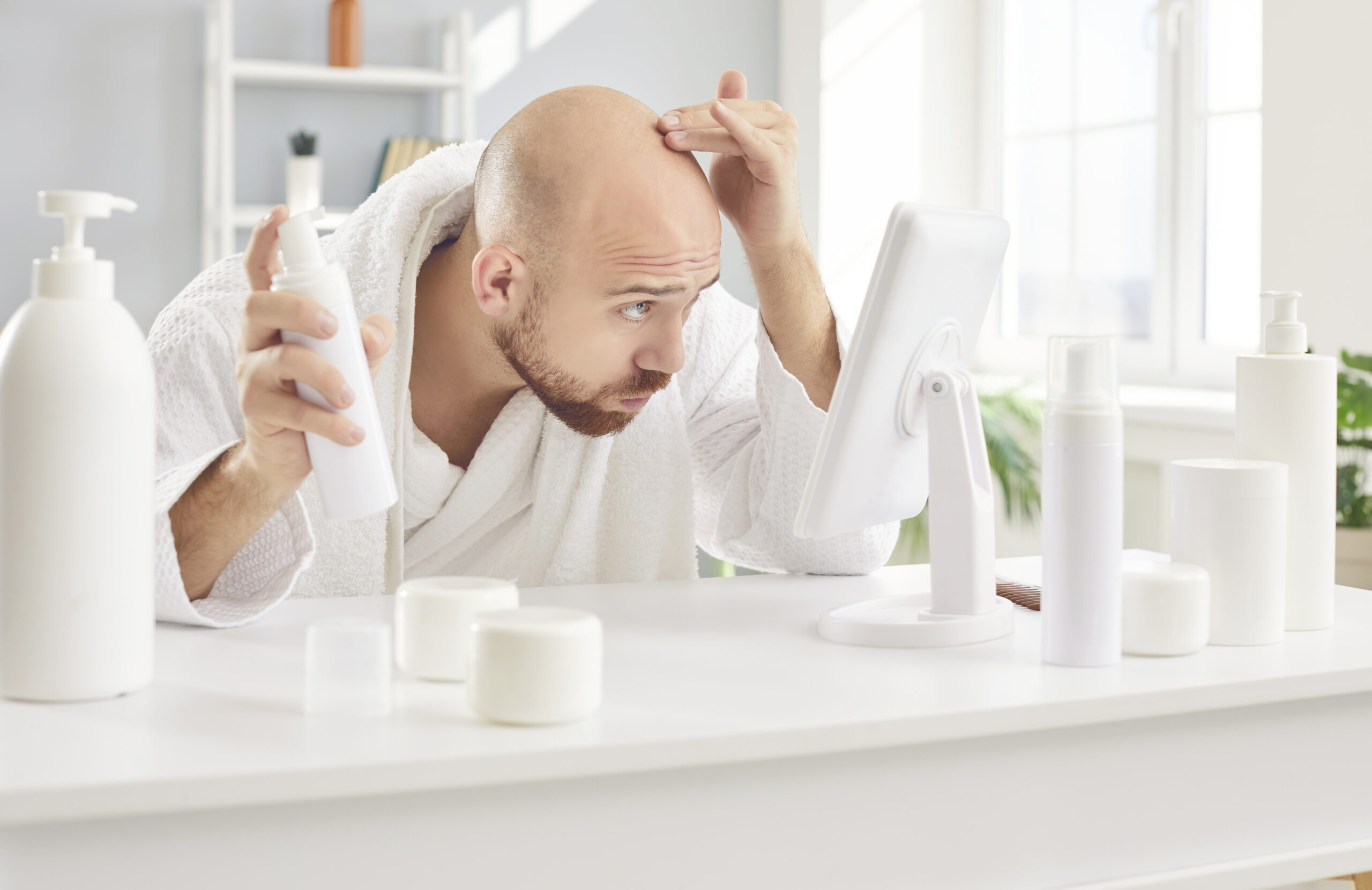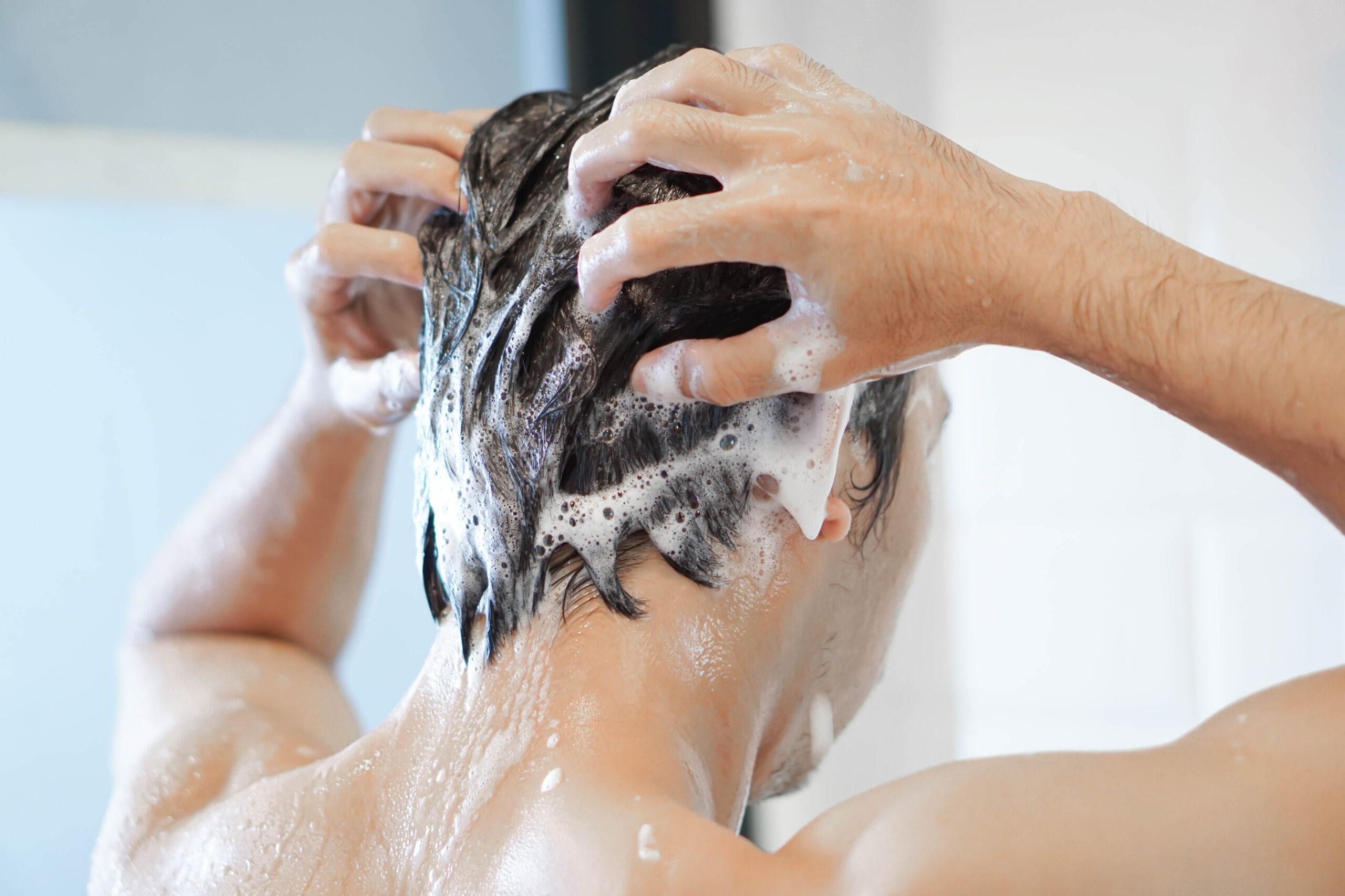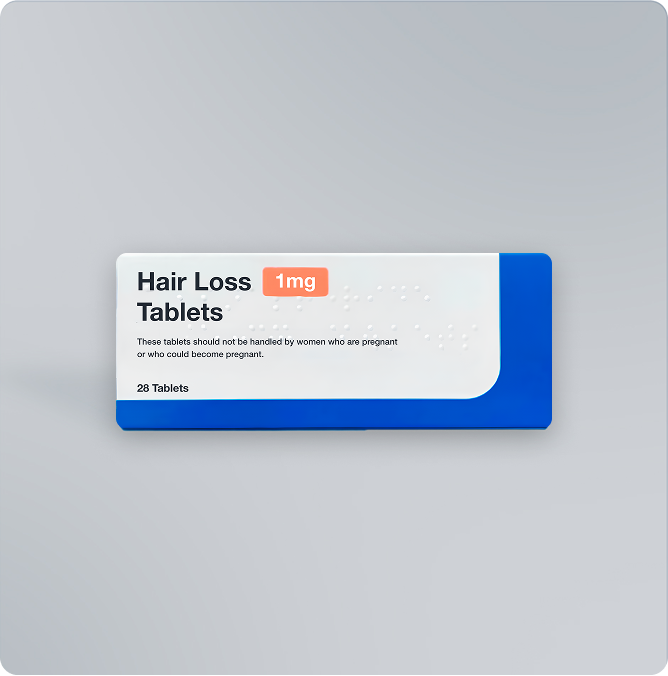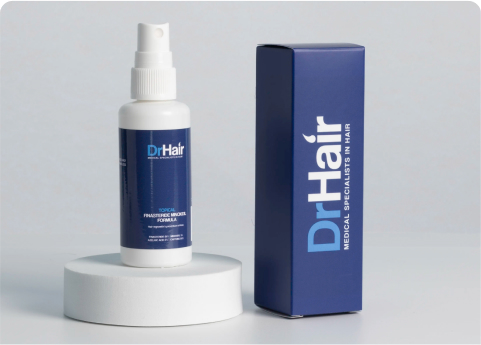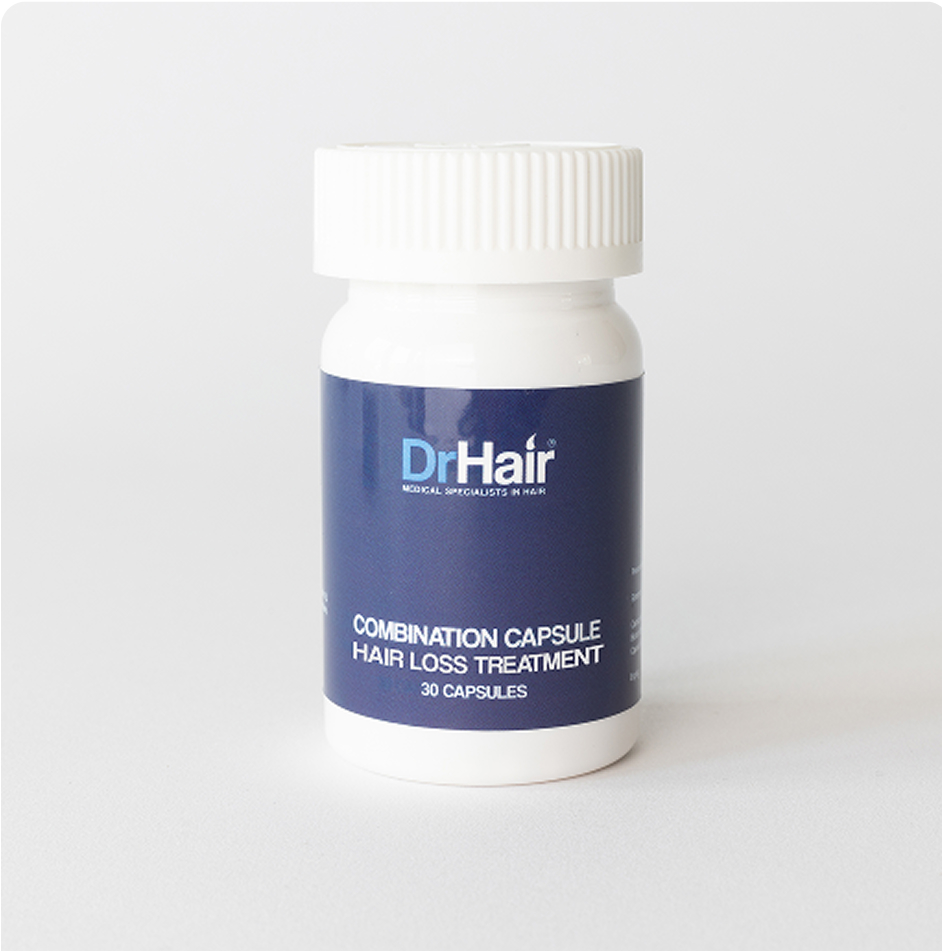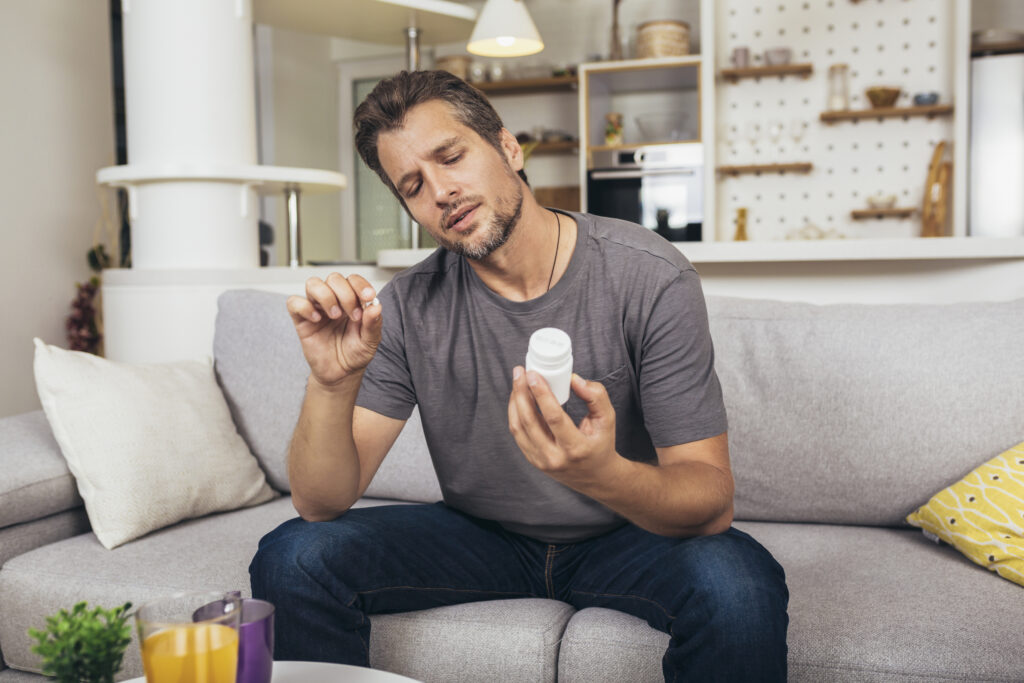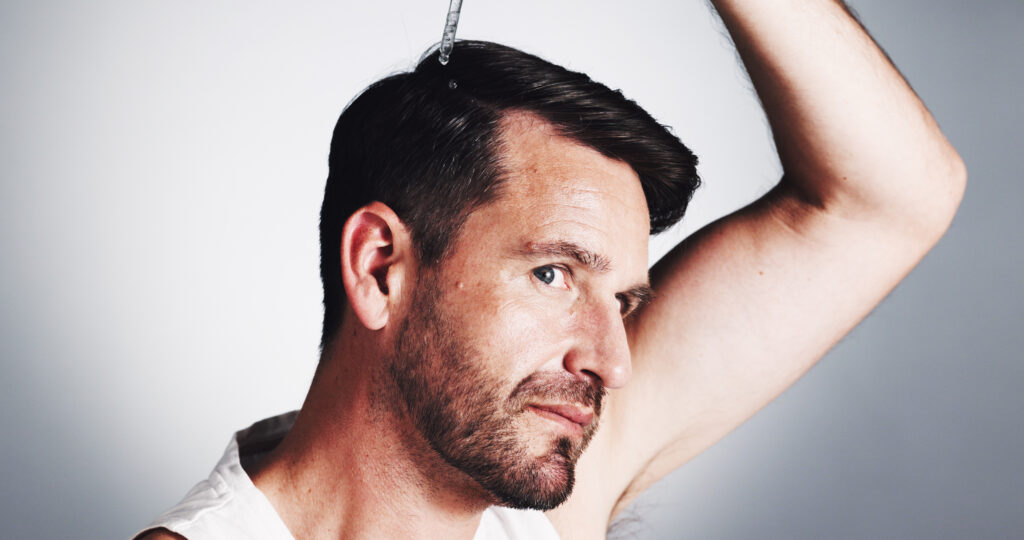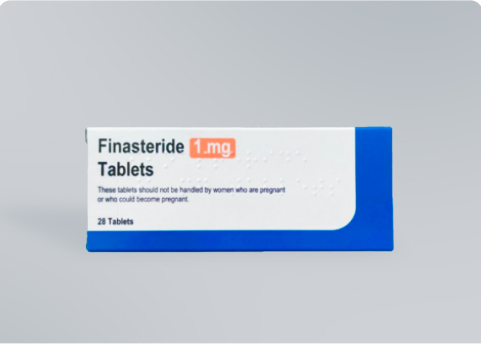Oral finasteride is the most prescribed treatment for earlier stages of male pattern baldness. However, in recent years, topical finasteride formulations have emerged and seem to provide a good treatment alternative to tablets.
While only 17% of hair restoration surgeons routinely recommend them [1] and they are not yet MHRA-approved, finasteride solutions, gels and foams appear to be as effective as the tablets. But their greatest selling point is that topical finasteride side effects are fewer and milder than the oral medication [2].
This article will tell you all you need to know about the potential risks of topical finasteride, such as:
- The main side effects of topical finasteride
- The way topical finasteride side effects compare against those of the tablets
- The best ways to prevent or reduce topical finasteride side effects
- What to do if you experience adverse reactions from topical finasteride
Table of Contents
- What is topical finasteride?
- Does topical finasteride have side effects?
- What are the main topical finasteride side effects?
- Is topical finasteride safer than tablets?
- Topical finasteride side effects in women
- Can you prevent or reduce topical finasteride side effects?
- Are finasteride spray side effects worse than the gel or foam?
- Is topical finasteride safe?
- What to do if you experience topical finasteride side effects
- Get the safest and most effective hair loss treatment
- Frequently asked questions
What is topical finasteride?
Finasteride is one of the most commonly used hair loss medications in the world [3]. It is available in two main forms: oral and topical. Topical finasteride is a solution you can easily apply to the thinning areas on your scalp. It is available as a liquid, gel, foam or spray, according to user preference.
While most men take the tablets, research shows that topical finasteride can be safer and just as effective [4].
How does topical finasteride work?
Male pattern baldness develops when a male hormone called dihydrotestosterone (DHT) binds to specific androgen receptors on your hair follicles. This makes the follicles shrink and produce shorter and finer hair until they eventually stop working.
Topical finasteride works for hair loss by lowering the DHT levels in your scalp and thus keeping your hair follicles healthier. It does so by inhibiting the activity of an enzyme called 5-alpha-reductase, which converts some of the testosterone in your body into DHT.
Does topical finasteride have side effects?
Yes, like every medication, topical finasteride can cause some unwanted side effects. However, research shows that in 96.9% of cases [5], these adverse reactions are mild or moderate. Moreover, reported topical finasteride side effect rates are often similar to placebo [5].
What are the main topical finasteride side effects?
The most commonly reported topical finasteride side effects are [4][2][10]:
- Scalp itching
- Scalp burning or tingling
- Scalp redness and irritation
- Dry and flaky scalp in the areas where the solution was applied
- A local allergic reaction (contact dermatitis)
Is topical finasteride safer than tablets?
Yes, liquid finasteride can be expected to have fewer and milder side effects than tablets. That is because oral medication can have systemic effects. It enters your bloodstream and travels through your entire body to reach your scalp. Topical finasteride, however, only affects the part of the scalp it is applied to, so any adverse reactions are normally local.
The main difference between oral and topical finasteride side effects is that there are significantly more reports of sexual and psychological side effects among tablet users.
Does topical finasteride cause sexual side effects?
Sexual side effects are significantly less common with topical finasteride, as it only lowers DHT levels in your scalp, not your entire body. This hormone plays an important role in sexual function, so reducing its blood levels abruptly can negatively impact performance.
One 2021 clinical trial conducted on 446 male patients revealed that only 2.8% of participants treated with topical finasteride experienced sexual side effects (e.g. erectile dysfunction, decreased libido, ejaculatory dysfunction) compared to 4.8% among those treated with finasteride 1 mg tablets and 3.3% of the placebo group [5]. The similar side effect rates between the topical finasteride and the placebo group show that the reported adverse reactions may not necessarily be caused by the medication.
Moreover, good news for men trying to conceive: while oral finasteride can affect fertility in some users, the topical variety is not likely to have this effect.
Does topical finasteride cause psychological side effects?
Oral finasteride has been reportedly associated with an increased incidence of depression, anxiety and suicidal ideation [7][8]. However, since topical finasteride does not normally have a systemic effect, it is not likely to cause such psychological disorders.
There are currently no reports of depression or anxiety associated with topical finasteride use in relevant studies. This does not necessarily mean they cannot occur, but the chances are very small and so far, no cases have been reported [5].
Topical finasteride side effects in women
Doctors don’t normally prescribe finasteride for women who haven’t yet reached menopause [5], regardless of its form. That is because it can cause foetal malformations and disrupt a woman’s hormonal balance and menstrual cycle. It is sometimes prescribed off-label to postmenopausal women with female pattern baldness.
However, topical finasteride may change this, due to its low risk of systemic side effects. While more research is needed, some scientists believe this medication might be a safe and effective hair loss treatment for premenopausal women [2][4][10]. Studies show similar, mild side effects for both genders [2].
More evidence is needed to prove topical finasteride safety in pregnancy. So it is recommended that expecting mothers avoid using, touching or handing this medication. If there is even a slight chance that the solution can cause birth defects, it is best avoided entirely.
Can you prevent or reduce topical finasteride side effects?
Topical finasteride side effects are normally mild and locally confined so they are rarely a cause for concern. However, just like you can reduce oral finasteride side effects, there are also some tricks to keeping topical adverse reactions to a minimum:
- Wash your hands well before applying – bacteria on your fingers might mix with the solution and make their way to your hair follicles, causing infection.
- Only apply the solution on healthy skin – if the topical finasteride makes its way into your bloodstream through a wound or sore on your scalp, it can cause systemic effects.
- Rub the solution in delicately – it’s good to gently rub the topical finasteride into your scalp after application. But doing so forcefully can cause soreness and irritation.
- Avoid over-applying – finasteride spray or foam can be tricky to dose correctly, so you may end up using more than you intend to. If you apply too much, it can be difficult to absorb and cause itchy scalp buildup.
- Spray your scalp carefully – You can reduce finasteride spray side effects by following the spraying distance mentioned on the bottle (usually 5-10 cm from the scalp). Holding the nozzle too close to your skin and spraying for too long may cause buildup, redness or irritation.
- Always test for allergies before first use – even if you have used topical finasteride before, always test a new product on a small patch of skin. This can help prevent contact dermatitis on your scalp.
Are finasteride spray side effects worse than the gel or foam?
Normally, if the finasteride concentration is the same, the topical formulation type (spray, gel, or lotion) should not significantly affect its likelihood of unwanted side effects.
However, different formulations use various other substances alongside the active ingredient. For example, finasteride spray will likely use propellants to push the liquid out of the bottle. They also contain different fragrances and preservatives. Propylene glycol is commonly used in hair loss treatments and may irritate the skin.
If you are allergic to one of these ingredients, you can experience a reaction to the formulations that contain it.
Is topical finasteride safe?
Yes, available research shows that topical finasteride is normally safe to use, with mostly minor and temporary side effects [2][5][6]. It is proven to have fewer and milder adverse reactions compared to oral finasteride, and the reactions are usually confined to the area where the medication is applied.
You still need a prescription for topical finasteride. The trichologist who performs your assessment will let you know if there is any way this medication might harm you (for example, if it interferes with other health conditions or preexisting treatments).
What to do if you experience topical finasteride side effects
Most topical finasteride side effects are mild and subside quickly. So if they do not cause significant discomfort, waiting them out may be the best idea. However, if the symptoms are intense or bother you, washing the solution off your scalp with warm water and shampoo should help.
If you experience itching, discomfort, redness or swelling every time you use topical finasteride, you may be allergic to it. You can try a different brand or product formulation on a small patch of skin to see if it still causes a reaction. If it does, you may need to use a different hair growth treatment.
If you experience significant swelling, pain, itching, oozing, inflammation and/or breathing difficulty after applying topical finasteride, call emergency services immediately. You may be experiencing anaphylactic shock, which can be life-threatening.
Get the safest and most effective hair loss treatment
Our Finasteride + Minoxidil formula can offer the full effectiveness of both medications with fewer side effects than oral finasteride. Studies show this combination is 94% effective against male pattern baldness [13]. And when you’re ready to subscribe, we offer discounted rates for subscription plans.
If you are worried about topical finasteride side effects and aren’t sure this is the right treatment for your hair loss, DrHair is here for you. Book an online consultation with our doctor-led support team and our friendly consultants will happily answer all your questions and discuss the risks and benefits of our hair loss products. They will also provide insight and guidance to help you reach your full hair growth potential.
Frequently asked questions
If you would like to find out more about topical finasteride side effects, you’ve come to the right place. Browse the answers to more frequently asked questions below.
Topical finasteride itself doesn’t develop more side effects when combined with minoxidil. However, topical minoxidil has its own potential side effects, such as headaches, rashes, scalp irritation and itching, allergic reactions, hair colour modifications or unwanted facial hair growth [9]. So you may encounter any of these adverse reactions when combining these two medications.
However, there is good news. Studies show comparable frequency and (low) severity of adverse reactions between a finasteride and minoxidil combination and each of the standalone topical treatments [11][12].
No, the fact that topical finasteride hasn’t yet been FDA or MHRA-approved doesn’t mean it is unsafe. But since the solution has been developed more recently than the oral formulation, there isn’t yet enough research to attest to its safety and effectiveness. While the studies conducted so far are promising, more time is needed for further evidence from large-scale clinical trials to emerge, proving its merits.
No. So far, there are no reports of permanent side effects from topical finasteride use. Most of the adverse reactions you can experience are mild and they normally pass in a few minutes to a few hours. If you develop a more powerful allergic reaction, it may take a few days or more to clear up. But you don’t need to worry about experiencing topical finasteride side effects indefinitely.
More research is needed to determine the effect of topical finasteride on animals. However, while it is likely not highly toxic to pets, it is wise to keep this hair growth treatment out of their reach. You can increase your pets’ safety by taking the following precautions:
- Store your topical finasteride securely in a cabinet or a closed drawer.
- Don’t let your pets lick your hands or head after applying your hair treatment.
- Throw away any tissues used to clean up excess finasteride.
- Dispose of empty topical finasteride containers in a bin with a lid.
- Wipe down surfaces where topical finasteride has been spilled.


